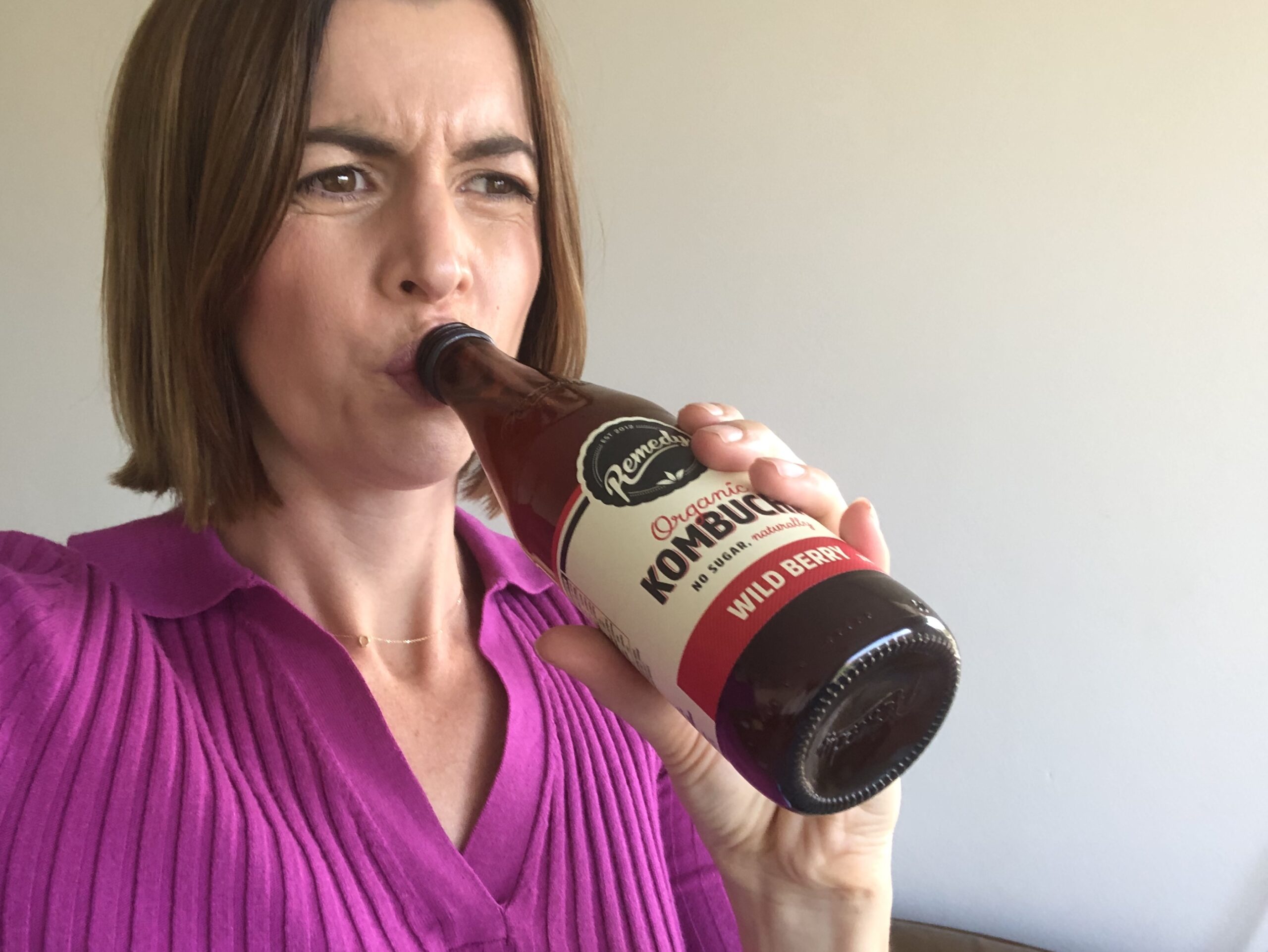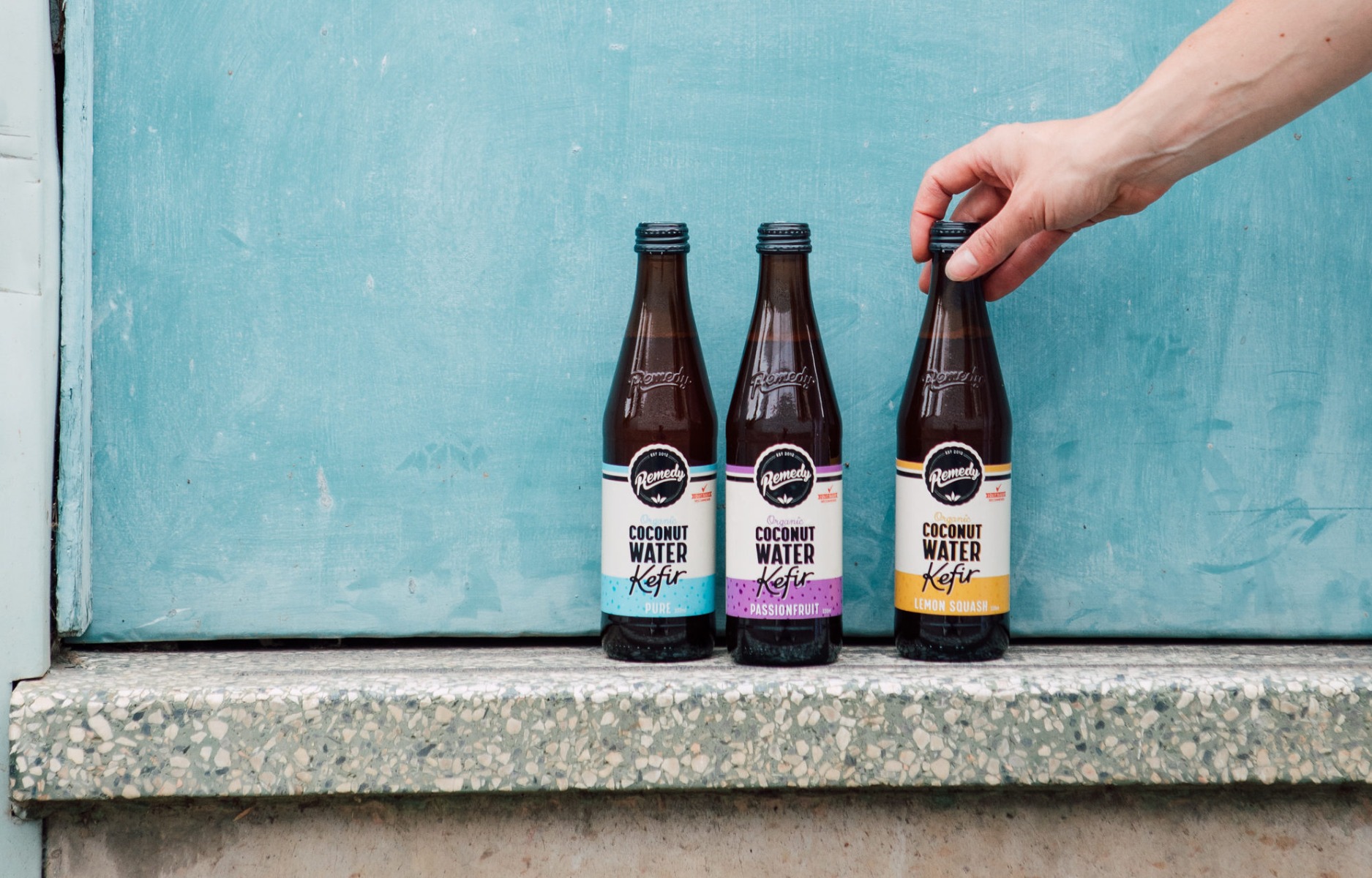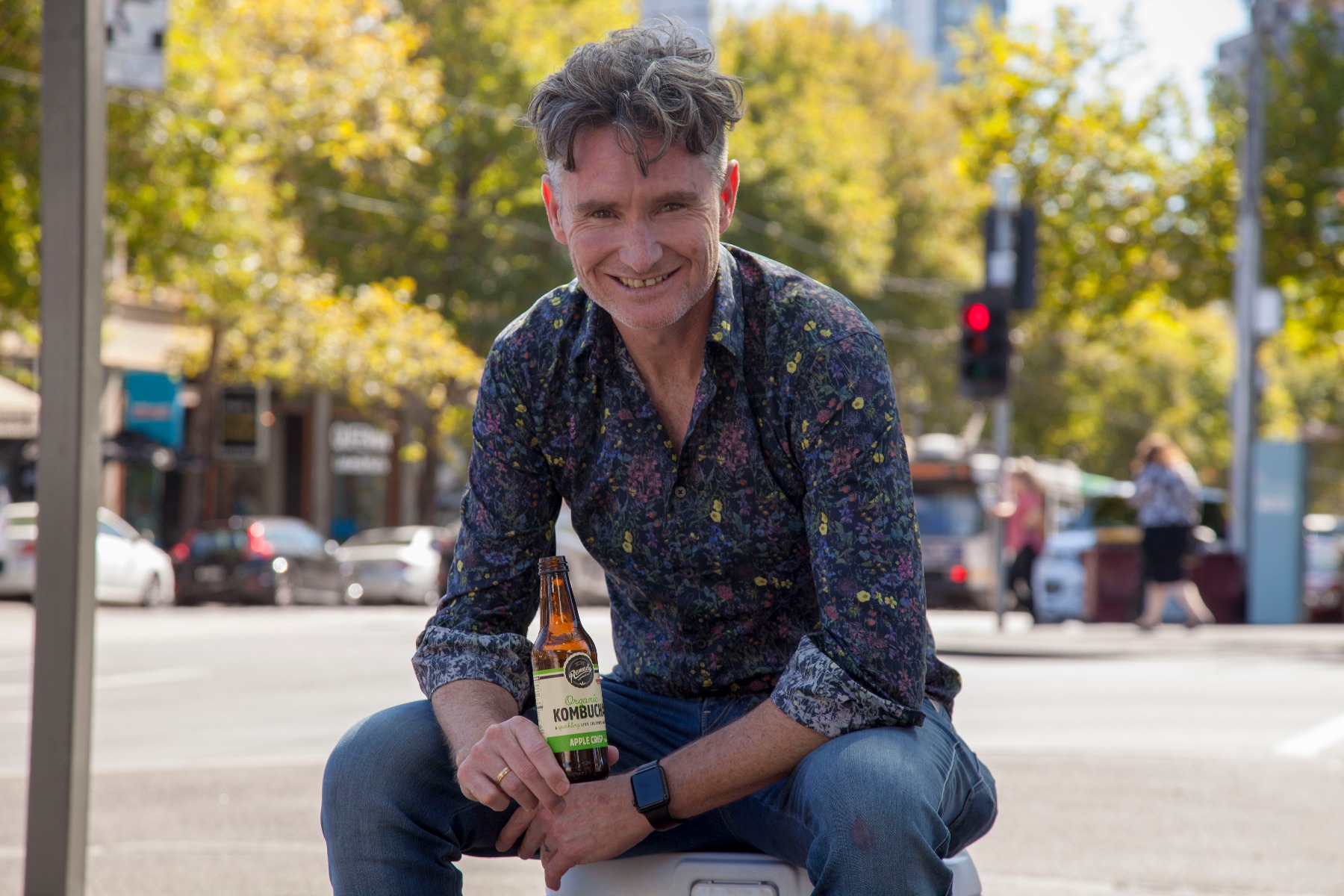You’re not alone if you think it sounds weird
Words by Melissa Shedden
If you haven’t plunged into the puckery depths of kombucha, you probably will soon, especially if you’re feeling bleurgh about your health. Or just darn thirsty.
As part of my own perpetual quest to find a wellness tonic for everything that ails me, I now look back with rose-tinted glasses on my first time, like it was yesterday (and much more affectionately than my first squirmy kiss with Kelvin White on the school basketball court, but that’s a whole other story.) I fondly remember my virgin sip of this cloudy liquid as the taste equivalent of tiny fairies tap dancing on my tongue.
It was otherworldly. Like nothing I’d experienced before. At first, I wasn’t sure. But it quickly grew on me. You know why? Kombucha tastes like health. But not a hold-your-nose-close-your-eyes-and-down-it health taste, because heck I’ve tried plenty of those as a health journalist over the years.
Kombucha: an acquired taste
That was more than a decade ago when kombucha caused your face to go Jim Carrey and by that I mean physically respond to the initial teeth-thrumming taste. Now it’s best described as exhilaratingly tangy and tart fruity flavour infusion (which explains why there’s so many tasty flavours to choose from). Sipping on one feels like a power nap in drink form – all sorts of refreshing.
You see, the collective understanding that not all bacteria are evil and that many are in fact, good and necessary to human health, have since made live cultured products as alluring as that fresh-out-of-the-oven Subway cookie scent. Yep, these days you can barely order a latte without bumping into something cultured, or otherwise funky – in a good way.
Kombucha’s origins – like almost everything about the drink – are a little Harold Holt-esque – a combination of myth and mystery. It’s been around for about 2000 years and made its way to us from China through Russia and Eastern Europe – but the middle class hipsters made it famous in the last decade when it got brewed commercially. We salute you beard-oiled friends.
Kombucha for beginners
The carbonated drink with live micro-organisms is made when tea, raw organic sugar and water are left to ferment with SCOBY, an acronym, that stands for symbiotic culture of bacteria and yeast. (Google warning: If you’ve never looked at a picture of SCOBY, the slimy beige blob is reminiscent of a jellyfish from the depths of unchartered waters. You know you want hit search, stat.)
Sounds funky, but the outcome is good, so let’s press on. The fermentation process makes the drink naturally fizzy as well, and then different flavours are added. Remedy, made famous by the ‘I Quit Sugar recommends’ tick, makes the real deal no sugar stuff straight out of Melbourne. (Side note: During their 30-day long aged brewing process, all of the key starter ingredient sugar is converted into organic acids leaving no sugar.) Think passionfruit and mango, raspberry lemonade, ginger and lemon and their newest creation, wild berry, a great gateaway booch that I wish I had when I first began my dalliance with the drink.
Great expectations
So what should you expect the first time you pop the top and suck one down?
My advice? Start with Remedy Kombucha Wild Berry – the jammy mouthfeel of a warm summer’s day. Give it a good sniff, then pretend you’re at a bougie restaurant and somehow you’ve ended up being anointed by the sommelier as the wine tester and consider it for a moment. Take that opening sip. Let it linger. Smack it between your lips and swoosh it to the back of your throat. Trust me, your expression will change more times than a cat meme – and rapidly – and I guarantee you’ll go back for more.
As for the health benefits, Remedy Kombucha is teeming with live cultures, organic acids and antioxidants (AKA the really good stuff). If you’re thirsty and looking for a smug feeling alternative to soft drinks, booze and juice this summer – go wild on Remedy Kombucha.



